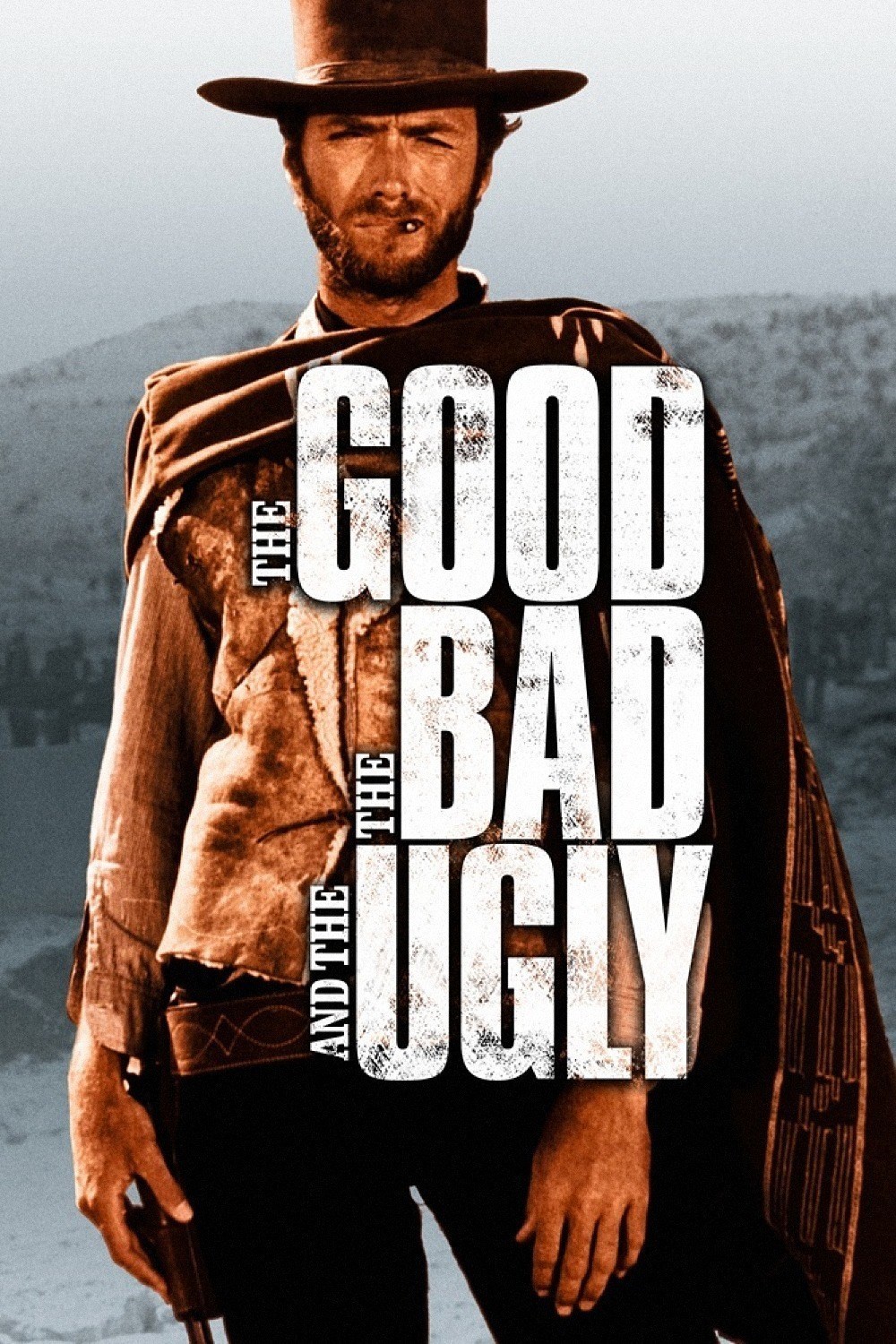Being made up of movies filmed on dry, punishing landscapes and populated with reticent, tobacco-chewing male characters cloaking their fragile masculinity with some good ol’ American blood and guts, the Western genre is generally not my genre of preference. I had previously plowed through a couple of John Wayne vehicles for the sole, hollow purpose of checking them off my list before I stumbled on Sergio Leone’s 1966 The Good, the Bad and the Ugly in that black hole that is Xfinity free movies. The Good, the Bad and the Ugly clocks in at an intimidating 2 hours and 57 minutes, yet I was hooked from the moment the opening credits rolled out to Ennio Moricone’s whip-cracking, unforgettable score.
The clincher of Leone’s Dollars Trilogy (including A Fistful of Dollars and For a Few Dollars More), The Good, the Bad and the Ugly reintroduces Clint Eastwood’s Man With No Name (or “Blondie”) as The Good, Lee Van Cleef’s Angel Eyes as The Bad, and Eli Wallach’s Tuco as The Ugly. The film follows the trio’s battle to find hidden Confederate loot against the epic landscape of the Civil War in the American West — expansive deserts and empty skylines abound, capturing the tough, brutal existence of our anti-heroes.
It is here that we find Blondie and Tuco partners in a daring ruse: the former brings the latter in for his long list of crimes only to save the nearly-executed Tuco with a well-placed gunshot to the hanging rope, freeing them both to abscond with the bounty. When Blondie decides he has had enough of Tuco, he leaves him to presumably die in a desert, as all good friends ultimately do. Tuco survives and is in the midst of enacting his revenge when a dying soldier tells Blondie the graveyard location of the buried treasure. So begins the frenemies’ journey to the valuable stone marker with Angel Eyes on his own identical quest.
Despite their simplistic taglines, all three characters are equipt with conflicting motives and complicated morals in a rebuff to to John Wayne’s paragon of American idealism. With a poncho tossed artfully over his shoulder, Young Clint as The Man With No Name is worlds away from his current chair-conversationalist iteration. Eastwood is made for Blondie’s unflappable nature; whether he is facing down the barrel of a gun or dragging his emaciated body across a desert, he stays impeccably cool — he meets complete dehydration with little more than an uncomfortable grimace. Tuco, on the other hand, doesn’t try to hide his opportunism and dogged nature; Wallach’s sly, calculating eyes are a nice foil to Eastwood’s squint. A combination of absurd schemes and human compromises, their twisted relationship backstabbed its way into my heart. Though they all commit their fair share of dastardly deeds, Angel Eyes is the only truly deplorable villain. He betrays no emotion and shows no loyalty, save for his ruthless pursuit of the treasure. Perhaps the least interesting character, Van Cleef as undiluted evil is still spellbinding to watch.
As evident from its runtime, The Good, the Bad and the Ugly delivers the ultimate slow burn. The narrative bides its time in revealing the plot’s direction, looping the characters’ trajectories around each other until the trio finally meet to deliver the film’s long-awaited finale. This deliberate, less-is-more approach colors the film’s other elements: the shootouts — accented by Leone’s famed long-shot/close-up pairing — evoke tension even without the inevitable shot being fired. In this way, Leone crafts a cinematographic treat and a masterpiece of tension and restraint that is both focused and epic in scale, enabling The Good, the Bad and the Ugly’s staying power and making us all the luckier.





